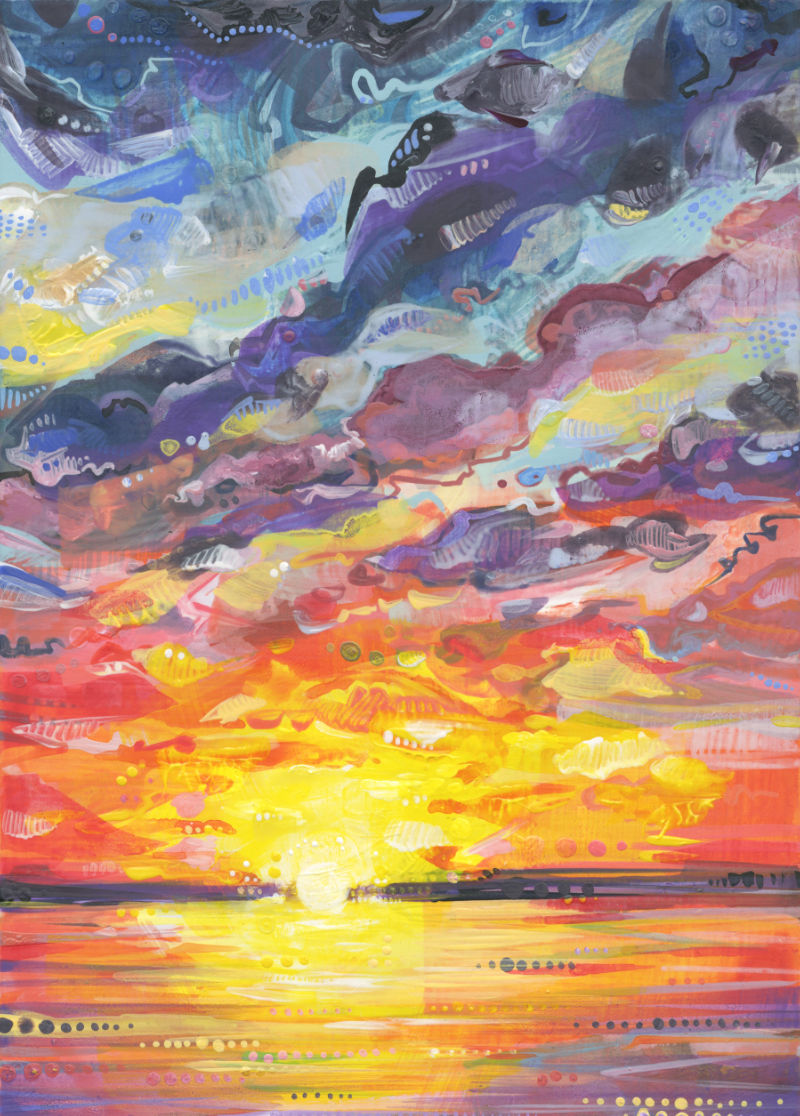Blog / 2017 / 3 Tips for Artists Who Don’t Want to Get Screwed by Companies
December 14, 2017
As artists in the internet age, we are always teaming up with companies to get our work into the world. We share our images on Instagram or sell prints and artsy items through Redbubble. Sometimes we even allow companies into the very relationships that sustain our creativity—the artist-patron ones—like when we ask for support through services like Patreon.
While it seems natural to work with companies in order to make a living with our art, there are some dangers, as evidenced by the past ten days on Patreon.
Last week, the company suddenly declared that it was going to charge people more fees for giving money to artists. A few days later, after creators lit up the internet with their displeasure, Patreon revoked its announcement in a “good news, bad news” kind of moment.
The good is that Patreon listened to creators. The bad is that the company looks lost, not like a company you want to trust with your money, either as an artist or as an art supporter. Though I’m fairly certain Patreon will find its feet again, I admit that this whole fee-asco has fundamentally changed how I view them.
In fact, it’s helped me to see the pitfalls of working too closely with any company, so, without further ado, here are my three tips for not getting screwed when working with a company to promote your art on the Web:
- Don’t commit yourself to any platform but your own.
- Remember that even if they call you “partner” they don’t mean it.
- Keep the connections real.
Don’t rely too heavily on any one social media site to connect with art lovers. What if you’ve built a Facebook following and the company suddenly decides your content is too risqué? Or what if you’re relishing all your LinkedIn “likes” when the platform decides to introduce payment tiers that will make your content basically invisible unless you pony up?
This is why I post videos on both Vimeo and YouTube. It’s why I wake up in a cold sweat sometimes when I remember that I have prints available only through Redbubble. It’s why I’m constantly linking back to my own website when I’m on social media.
Print-on-demand companies cannot exist without artists, but to look at their business model you wouldn’t know it. The people who buy prints of your work are considered the company’s customers, not yours. Print-on-demand sites will not even give you the name of people who purchase your images. I know this because I regularly beg and plead for them to reconsider, and they are not budging.
Worse still, not satisfied just to claim your clients as theirs, these companies actually view you as their customer as well. Artists are different from the customers who don’t publish content to their site, but we’re still just their customers.
Patreon’s model is the same. The microdonation site used to be better on this front, acknowledging the artist-patron relationship by giving creators their supporters’ contact information. But the Great Patreon Fee-asco of 2017 shows that they see artists as customers too. And while there’s nothing inherently wrong with that, artists shouldn’t kid themselves about where they stand with these companies.
In the end, this is about you and the people who love your art. Make sure that you are able to contact them outside of a company context, and make sure that you do contact them regularly. Because it’s not some company’s website that makes your art possible: it’s art lovers who do.

Understanding
2017
acrylic on panel
7 x 5 inches
In an effort to follow my own advice, I’ve started a Liberapay profile! It’s a little different from Patreon, but it’s similar in that it’s a way to support my creativity with microdonations.
And that support is vital for me, not just financially, but also emotionally. I’m thrilled when people buy my art, overjoyed when they commission me, ecstatic when they buy my books, and delighted when they hire me as an art guide, but the truth is that microdonations center me in a way that no other form of financial support does. The message with the microdonation is:
The only thing I want right now is to help you do what you’re already doing.
These are the words every artist needs to hear on a regular basis. This sentiment is what makes art possible.
Maybe this post made you think of something you want to share with me? Or perhaps you have a question about my art? I’d love to hear from you!
To receive an email every time I publish a new article or video, sign up for my special mailing list.
If you enjoyed this post, Ko-fi allows you to donate. Every dollar you give is worth a bajillion to me!



